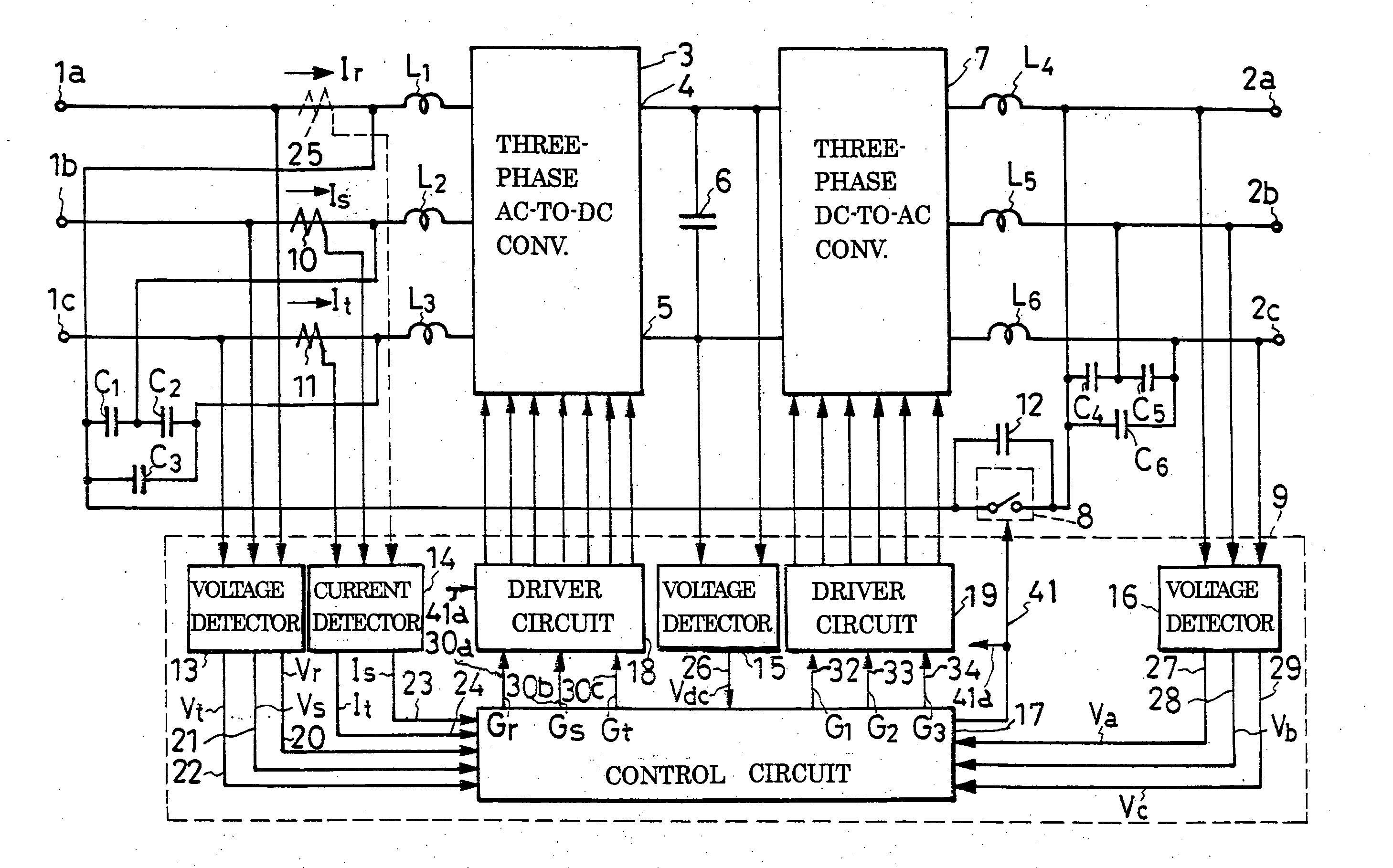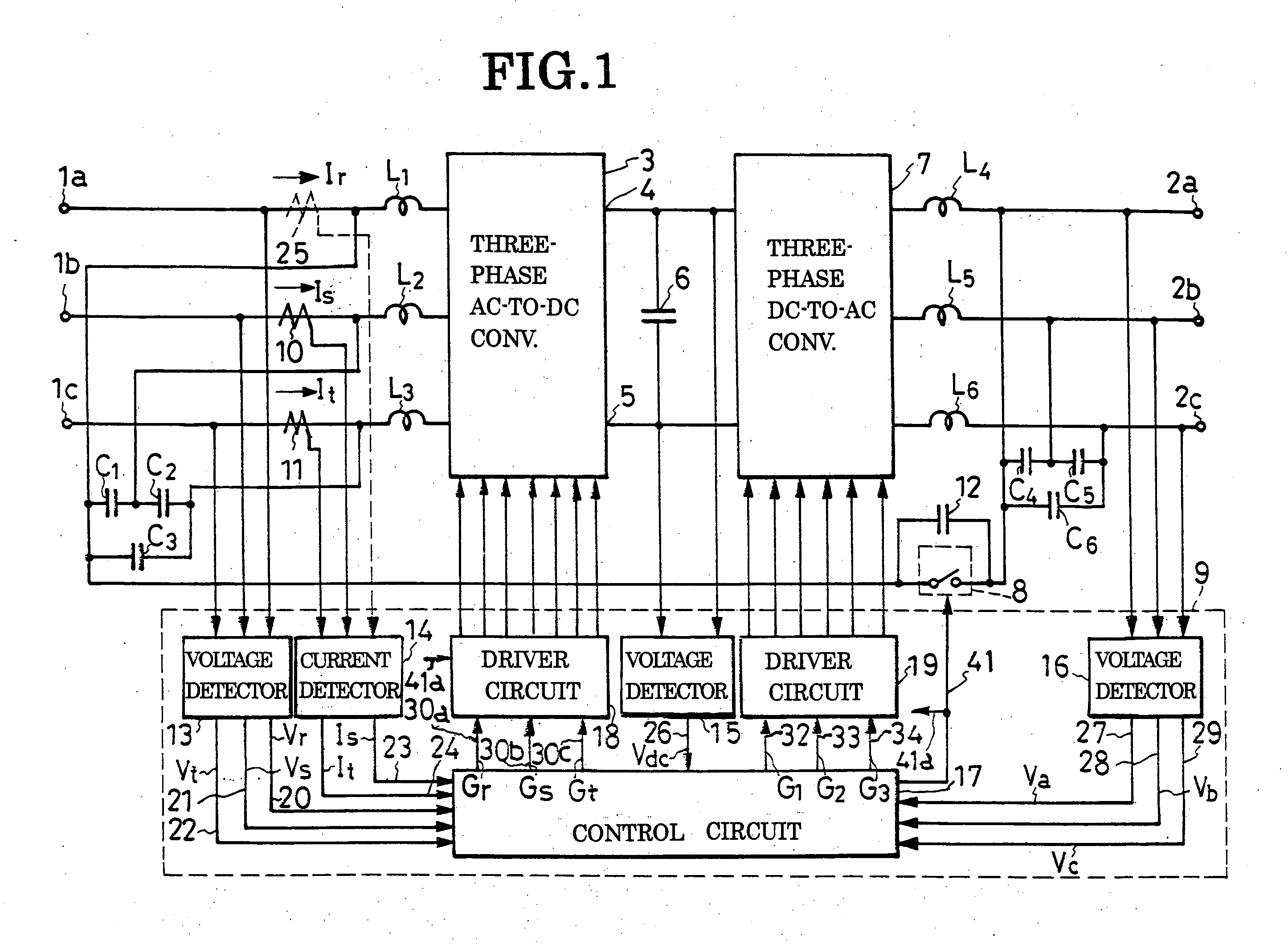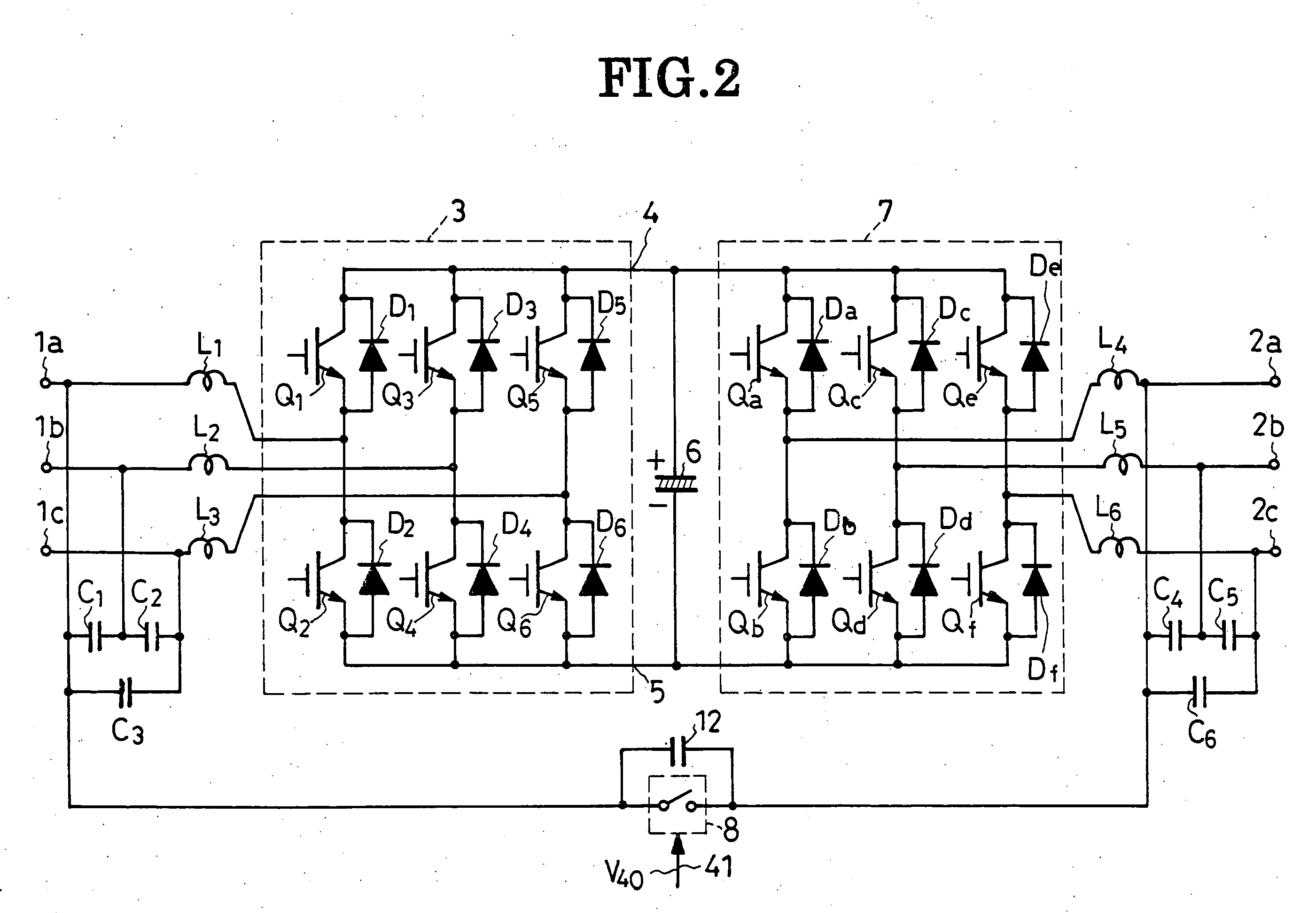Three-phase ac-to-dc-to-ac converter
a power converter and three-phase technology, applied in the field of power converters, can solve the problems of substantial power loss, substantial diminution of efficiency, and power loss of six switches of the dc-to-ac converter circuit, and achieve the effect of improving the efficiency of the three-phase ac-to-dc-to-ac power converter system and avoiding power loss through these switches
- Summary
- Abstract
- Description
- Claims
- Application Information
AI Technical Summary
Benefits of technology
Problems solved by technology
Method used
Image
Examples
embodiment
of FIG. 7
[0130] This alternate embodiment of the invention features a modified ac-to-dc converter control circuit 36a for use in the three-phase power converter system of FIGS. 1-5 in substitution for the original ac-to-dc converter control circuit 36, FIG. 3. All the other details of construction are as previously set forth with reference to FIGS. 1-5 in conjunction with the first disclosed embodiment. A comparison of FIGS. 3 and 7 will reveal, however, that the modified ac-to-dc converter control circuit 36a is constructed to input the detected R-phase input current Ir for production of the R-phase current control signal Vir, instead of creating this signal from the S- and T-phase current control signals Vis and Vit as in the ac-to-dc converter control signal generator circuit 63, FIG. 5, of the first embodiment. It is therefore understood that the modified ac-to-ac converter control circuit 36a presupposes use of an R-phase current detector indicated by the broken lines in FIG. 1...
PUM
 Login to View More
Login to View More Abstract
Description
Claims
Application Information
 Login to View More
Login to View More - R&D
- Intellectual Property
- Life Sciences
- Materials
- Tech Scout
- Unparalleled Data Quality
- Higher Quality Content
- 60% Fewer Hallucinations
Browse by: Latest US Patents, China's latest patents, Technical Efficacy Thesaurus, Application Domain, Technology Topic, Popular Technical Reports.
© 2025 PatSnap. All rights reserved.Legal|Privacy policy|Modern Slavery Act Transparency Statement|Sitemap|About US| Contact US: help@patsnap.com



